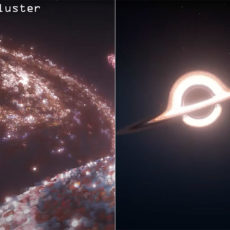
NASA’s Nancy Grace Roman Space Telescope can use rare cosmic events to calculate the expansion rate of the universe by mining its images for gravitationally lensed supernovae. Roman will typically be used to study elusive dark energy by comparing the intrinsic brightness of objects like type Ia supernovae to their perceived brightness to determine distances.
Astronomers could also use Roman to inspect gravitationally lensed supernovae. These events are rare, and very tough to find, with very few being detected thus far, but Roman’s extensive field of view as well as repeated imaging in high resolution increases those chances. To date, only eight eight gravitationally lensed supernovae in the universe have been discovered using data from NASA’s Hubble Space Telescope and James Webb Space Telescope.
- BRIGHT, SHARP VIEWS ANYWHERE: Unlike many beginner telescopes, this quality refractor features fully coated glass lenses and a 70mm aperture for...
- PERFECT FIRST TELESCOPE FOR BEGINNERS: Designed for adults and kids to enjoy together, this beginner-friendly telescope sets up in minutes and...
- EASY NO-TOOL SETUP: No complicated assembly or tools needed. The full-height tripod and telescope tube set up in seconds and pack neatly into the...

This illustration, using Hubble Space Telescope images of Supernova Refsdal, shows how the gravity of massive galaxy cluster MACS J1149.6+2223 bends and focuses the light from the supernova behind it, resulting in multiple images of the exploding star. Astronomers, therefore, see multiple images of the exploding star, each one corresponding to one of those altered light paths. Each image takes a different route through the cluster and arrives at a different time,” said Hannah Braun, Space Telescope Science Institute.
[Source]










